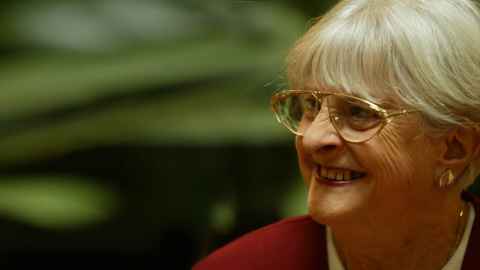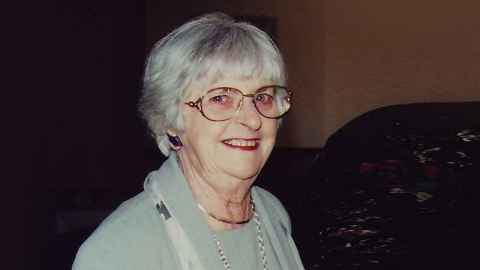Inspirational Marie Clay
Find out about Dame Marie Clay's contribution to children's language and literacy.

Born in 1926 in the capital Wellington, Clay is uniquely New Zealand — frugal and resourceful. Although education is a top priority, funding for schools and research leaves no room for excess, and lack of it spurs ingenuity and cooperation. Historically, the national curriculum was developed and revised by educators, with products of collegial work attributed to the New Zealand Department of Education rather than to individuals.
From the beginning of their study at teachers colleges, pre-service teachers work in schools, and they apprentice with master teachers as they enter the profession. These cultural features are footholds in Marie’s work, as reflected in her concern for the “economic use of a child’s learning time” and the central role that collegial interactions play in professional development.
Clay completed her teacher training at the Wellington College of Education and was awarded a primary teacher’s certificate in 1945. At the same time, she was pursuing a Bachelor of Arts degree at the Wellington campus of the University of New Zealand. After graduating in 1946 with a senior scholarship in education that would support advanced study, she completed her master’s thesis, “The Teaching of Reading to Special Class Children,” and was awarded a master of arts degree with honors in 1948. At the same time, she was employed as an assistant psychologist at the New Zealand Department of Education.
We do not have to solve the problems of teaching on our own: we have the constructive learner as our strongest ally.
In 1950, Clay travelled to the United States on a Fulbright Scholarship and a Smith-Mundt grant to study developmental and clinical child psychology at the University of Minnesota’s Institute of Child Welfare. She acknowledges this as a turning point in her understanding of how to study children’s learning.
Dame Marie Clay's contributions

Marie Clay’s theoretical and research contributions in children’s language and literacy extend beyond reading recovery into children’s learning in whānau/fono /families, early childhood education and primary grades.
Foundational premises of her thinking pervaded her research and translations into practice, and led to novel approaches for observing and facilitating children’s learning. Examples of these premises related to the Marie Clay Research Centre are:
- An understanding that assumptions about groups deprive us of the guidance that we need to teach individuals
- Re-conceptualising the constructs of prevention, intervention, acceleration and systemic implementation, which are now embedded in diverse, international educational systems
- Acknowledging the central role of collegial interactions in professional development and teacher leadership for sustaining children’s progress and educators’ work
This summary of Marie Clay's biography is adapted from the 1999 book, Stirring the Waters: The Influence of Marie Clay, edited by Janet S Gaffney and Billie Askew. It is presented here with permission of Heinemann, Portsmouth, NH and the authors.